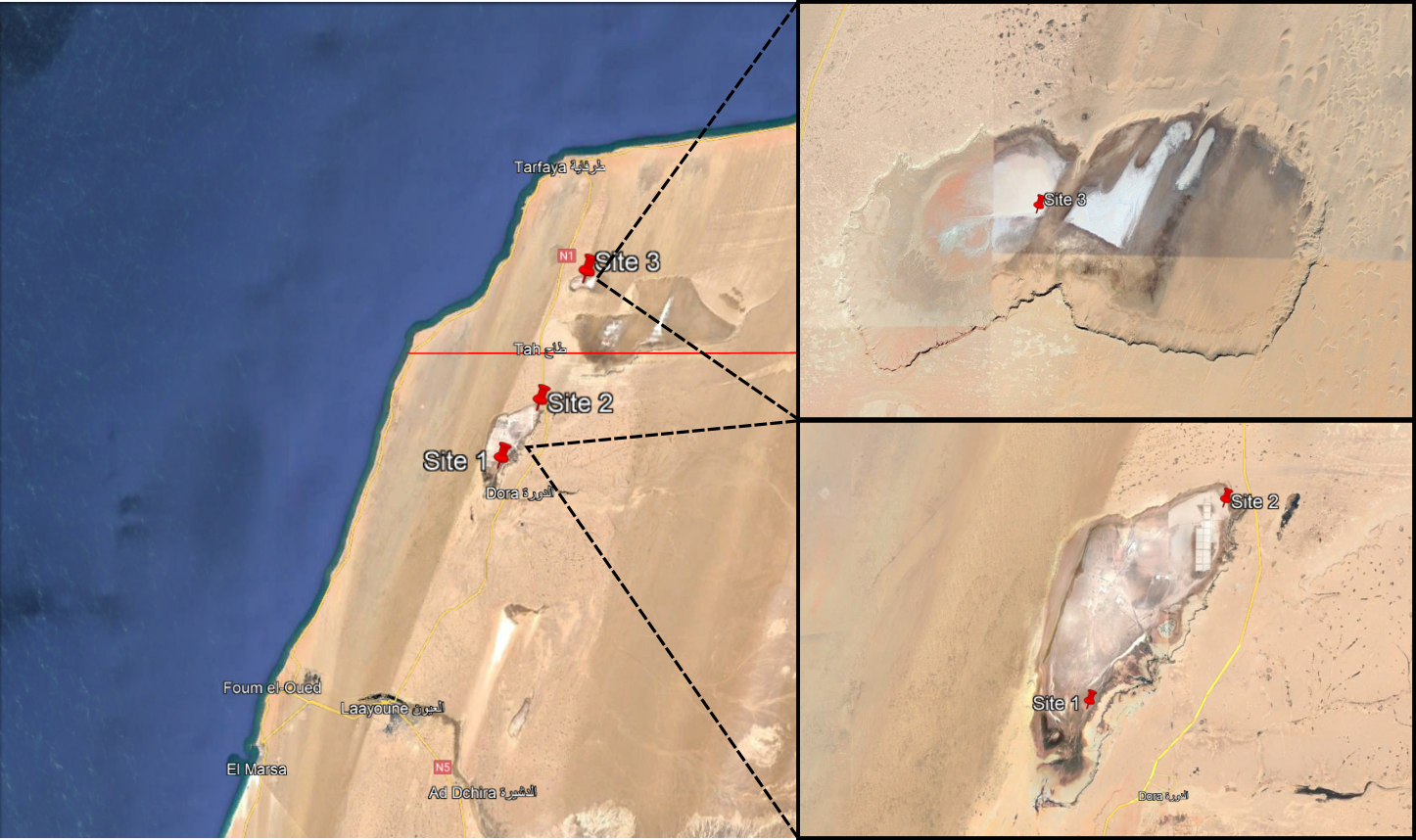Western Sahara salt plains as a potential novel Mars analogue
- 1The Open University, EEES, United Kingdom of Great Britain – England, Scotland, Wales (velislava.ilieva@open.ac.uk)
- 2The Centre for Ecology and Hydrology, Wallingford, United Kingdom
- 3IRSPS, Pescara Italy and Ibn Battuta Centre, Marrakech, Morocco
The identification of novel terrestrial sites that are analogous for other planetary bodies is an active area of research within astrobiology, because of the logistical and financial difficulties in obtaining extraterrestrial samples for analysis. Characterisation of potential analogue sites is undertaken to assess how accurately they represent a specific extraterrestrial environment. Analysing their physicochemical conditions and microbial communities are key components of these studies to understand what metabolisms would be viable in such environments.
One such novel analogue environment is the salt plains of Western Sahara. Western Sahara is one of the driest regions on Earth. It is located on the northwest coast of West Africa and is characterised by high UV exposure, low annual precipitation and water activity, subsurface water and high annual temperatures. These features make Western Sahara a potential analogue site for Mars during the Noachian-Hesperian transition period (3.5 – 3.8 Ga), when the atmosphere began to thin and surface water started evaporating (Warner et al., 2010), similar to other terrestrial deserts, such as the Atacama Desert and the McMurdo Dry Valleys.
The hypersalinity, aridity and high UV radiation levels of the Western Sahara salt plains would also be appropriate to study whether dissimilatory sulfur metabolisms would be viable in a Noachian-Hesperian Mars analogue environment. Dissimilatory sulfur cycling refers to the use of inorganic sulfur compounds for energy conservation and it has been recognised as a metabolic strategy of interest for putative martian life (Macey et al., 2020). On Earth, evidence from stable sulfur isotope fractionation has suggested this metabolism emerged early in the history of life (~3.5 Ga). During this period, the conditions on Mars were predicted as being more habitable than present-day, with an active magnetic field, thicker atmosphere and liquid water on the surface.
In this study, molecular and geochemical techniques were used to give first insights into the potential of the Western Sahara salt plains to serve as an analogue of Mars during the Noachian-Hesperian transition period. The microbiology was investigated through cultivation-independent and culture-dependent analyses of salt crystals, sediment and water samples obtained at three sites near Llaayoune (Fig. 1). The chemical nature of the samples was analysed through ion chromatography (IC) and inductively coupled plasma - optical emission spectrometry (ICP-OES).
The geochemical characterisation confirmed the high salinity of the samples and identified that sodium, potassium, magnesium and sulfur were the most enriched elements within all samples. Cultivation-dependent work resulted in the enrichment of a wide range of metabolic strategies from the samples including aerobic heterotrophs, phototrophs and sulfate-reducers. The enrichments from the salt were dominated by strains of Bacillus, whereas sulfate-reducing strains of Clostridium were isolated from the sediment samples. Microscope analysis of phototroph-selective media also indicated that algae and Cyanobacteria were successfully enriched from the samples. 16S rRNA amplicon sequencing results will also be presented to gain further in-depth understanding of the microbial community composition. Additionally, results from quantitative polymerase chain reaction (qPCR) experiment targeting sox and dsr genes will be presented to identify the abundance of genes specific for dissimilatory sulfur metabolisms within the samples.
Preliminary data shows that sulfur cycling is occurring in Western Sahara salt plains. Future characterisation of this environment will involve metagenomic analysis of the samples and genome sequencing of the isolates to identify the key metabolisms underpinning the survival and viability of the microbial community. Comparative studies with other Mars analogue environments will then be undertaken to identify metabolisms that may have been thermodynamically viable in ancient martian aqueous environments.

Figure 1. Location of the sample collection sites. Images were generated with Google Earth Pro.
References
Macey, M. C., Fox-Powell, M., Ramkissoon, N. K., Stephens, B. P., Barton, T., Schwenzer, S. P., . . . Olsson-Francis, K. (2020). The identification of sulfide oxidation as a potential metabolism driving primary production on late Noachian Mars. Scientific Reports, 10(1), 10941. https://doi.org/10.1038/s41598-020-67815-8
Warner, N., Gupta, S., Lin, S.-Y., Kim, J.-R., Muller, J.-P., & Morley, J. (2010). Late Noachian to Hesperian climate change on Mars: Evidence of episodic warming from transient crater lakes near Ares Vallis [https://doi.org/10.1029/2009JE003522]. Journal of Geophysical Research: Planets, 115(E6). https://doi.org/https://doi.org/10.1029/2009JE003522
How to cite: Ilieva, V., Stephens, B., Goodall, T., Ori, G., Read, D., Pearson, V., Olsson-Francis, K., and Macey, M.: Western Sahara salt plains as a potential novel Mars analogue, Europlanet Science Congress 2022, Granada, Spain, 18–23 Sep 2022, EPSC2022-1043, https://doi.org/10.5194/epsc2022-1043, 2022.

